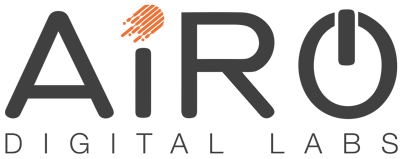Your Guide To Remote Patient Monitoring
The delivery of preventative healthcare in the US is being revolutionized by a certain service. Clinicians that adopt remote patient monitoring (RPM) and start RPM programs will be in a better position to provide patients with more effective care as well as benefit financially.
What is RPM Or Remote Patient Monitoring?
The practice of remotely monitoring patients' medical and other health data and electronically transmitting such data to healthcare professionals for evaluation and, if necessary, suggestions and instructions is known as remote patient monitoring, also known as remote physiologic monitoring.
RPM can also keep people healthy, enabling elderly and disabled persons to remain in their homes for a longer period and preventing them from entering nursing homes. RPM can also assist in enhancing the quality of life and keeping expenses under control by reducing the number of hospitalizations, readmissions, and lengths of stay.
What Is the Process of Remote Patient Monitoring?
You might still be a little uncertain about how RPM functions even after learning what it means. Let's examine several RPM process facts that are frequently known:
A provider chooses the condition(s) that can be managed remotely and starts a remote patient monitoring program to serve patients with an RPM service. A variety of patient health data can be gathered by providers through remote patient monitoring. This covers weight, blood sugar levels, blood pressure, heart rate, and vital signs.
A healthcare professional decides that a patient will benefit from remote physiologic monitoring of one or more of the different categories of health information that RPM can collect. The provider may prescribe or order RPM with the patient's permission.
A device to gather the patient's health information is given to them. Devices for remote patient monitoring must be electronically connected, which is typically done through Bluetooth or cellular networking. Blood pressure monitors, weight scales, blood glucose meters, and spirometers are among the most popular RPM devices. Pulse oximeters and ECG devices are two other device categories where RPM usage is rising.
After the device is properly configured, health information is collected by it and sent, typically electronically, from the patient to the practitioner.
Based on the analysis of the data, the provider provides the patient with advice and suggestions regarding their health and wellness.
Advantages Of Remote Patient Monitoring
Increased patient involvement: RPM devices give people the opportunity to take an active part in understanding and managing their medical issues.
Better overall care quality and value-based care: RPM makes this possible by allowing patients and healthcare professionals access to more pertinent patient data.
Higher Volume of Patients: More individuals can be treated by healthcare professionals because RPM enables patients to perform simple health testing.
Higher levels of education and support: RPM educates and supports patients every day by offering information and feedback about their situations.
Reassurance: Constant monitoring can reassure patients that health problems will be detected in their early stages.
Benefits of RPM In Mitigating The Cost of Chronic Illnesses
Unfortunately, we spend a lot of money treating chronic illnesses including heart disease, diabetes, chronic obstructive pulmonary disease (COPD), and many others reactively rather than proactively as soon as symptoms appear. According to the Centers for Disease Control and Prevention, the United States currently spends around $3.5 trillion on treating mental and chronic health disorders (CDC). That amounts to about 90% of all of our yearly healthcare expenses.
Everybody finds it difficult to swallow the high price of healthcare. Using remote patient monitoring, practitioners and patients can effectively manage the following prevalent chronic conditions:
Heart disease: Heart disease and stroke are responsible for one-third of all annual deaths in the United States. More than 859,000 Americans, in total. The reality that these two diseases alone cost our healthcare system $200 billion yearly and cost American companies $130 billion in lost productivity is equally alarming.
Diabetes: More than 34 million Americans currently have diabetes, and another 88 million have prediabetes, which is the metaphorical precipice that leads to diabetes. Alarmingly, the medical and lost productivity expenditures associated with diabetes total more than $325 billion in the United States. asthma-rpm-chronic-disease
Asthma/COPD: The estimated cost of chronic lung conditions is currently $50 billion yearly, with the ailment causing U.S. workers to miss more than 16 million days of work on average each year.
Final Thoughts:
Practitioners and patients are discovering that controlling these and other chronic diseases is frequently more simple than they thought was possible because of the advantages of remote patient monitoring. RPM provides patients with real advantages that are difficult to dispute, in addition to proactively controlling the costs related to chronic diseases.
